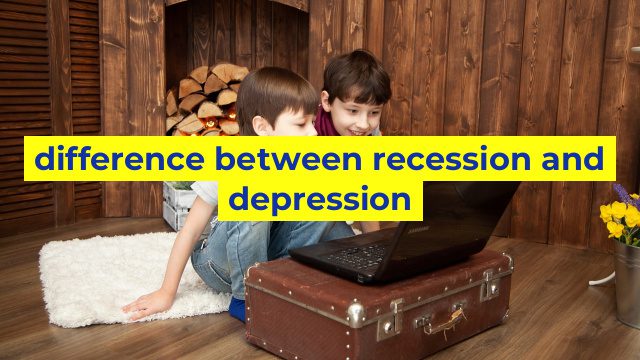The Key Differences Between a Recession and a Depression
As economies around the world continue to experience ups and downs, terms like recession and depression have become increasingly common. Although most people understand that both terms relate to a significant economic downturn, they may not understand the fundamental differences between these two concepts. Below we explore the key differences between a recession and a depression.
What is a Recession?
A recession is a short-term economic downturn, lasting anywhere between six months and two years. During a recession, economic activity slows down, and many indicators such as GDP, employment rates, and consumer spending decline. Investors face challenges as they see their investments lose value, and production processes can slow down leading to supply shortages.
During a recession, the government and central banks often use various policies and interventions to increase economic activity. These can include lowering interest rates, increasing government spending, and providing stimulus packages that can help to revive the economy.
What is a Depression?
A depression is a severe and prolonged economic downturn that lasts significantly longer than a recession, often lasting several years. During a depression, several macroeconomic indicators such as employment rates, GDP, consumer spending, and business profits are significantly impacted.
Depressions often happen after a financial panic, which is a period of intense fear and uncertainty about the economy leading to an abrupt change in investment and economic activity. As a result, businesses may fail, unemployment rates can skyrocket, and governments may struggle to provide adequate support for their citizens.
The Main Differences Between a Recession and a Depression
The primary differences between a recession and a depression relate to the severity and duration of the downturn. Recession lasts only for a short while, while a depression can last for years. Additionally, a recession is generally countered by government and central bank interventions, while depressions often require significant structural changes to the economy to end.
In summary, a recession is a short-term decline in the economy, whereas a depression is a prolonged and severe decline. Both are serious economic downturns and can have significant and long-lasting impacts on citizens, businesses, and governments. It’s crucial to understand these differences to prepare better and respond effectively to any negative economic trends that may occur.
Table difference between recession and depression
| Feature | Recession | Depression |
|---|---|---|
| Definition | A period of temporary economic decline during which trade and industrial activity are reduced. | A severe and prolonged downturn in economic activity characterized by high unemployment, reduced trade and investment, and a decline in consumer spending and business profits. |
| Duration | Short-term (6-18 months) | Long-term (at least two years) |
| Severity | Mild to moderate | Severe |
| Unemployment rate | Increases slightly (usually less than 10%) | Increases significantly (usually more than 10%) |
| Business failures | Some businesses may fail | Many businesses fail |
| Consumer prices | May decrease slightly | May decrease significantly |
| Gross Domestic Product (GDP) | Declines slightly (usually less than 5%) | Declines significantly (usually more than 10%) |

